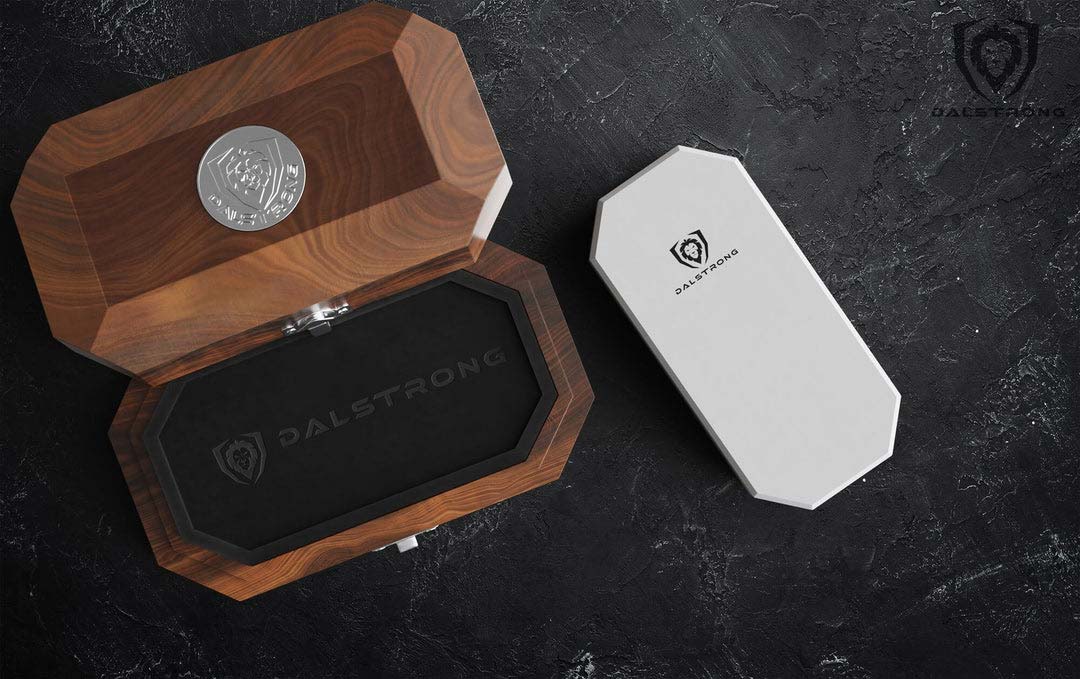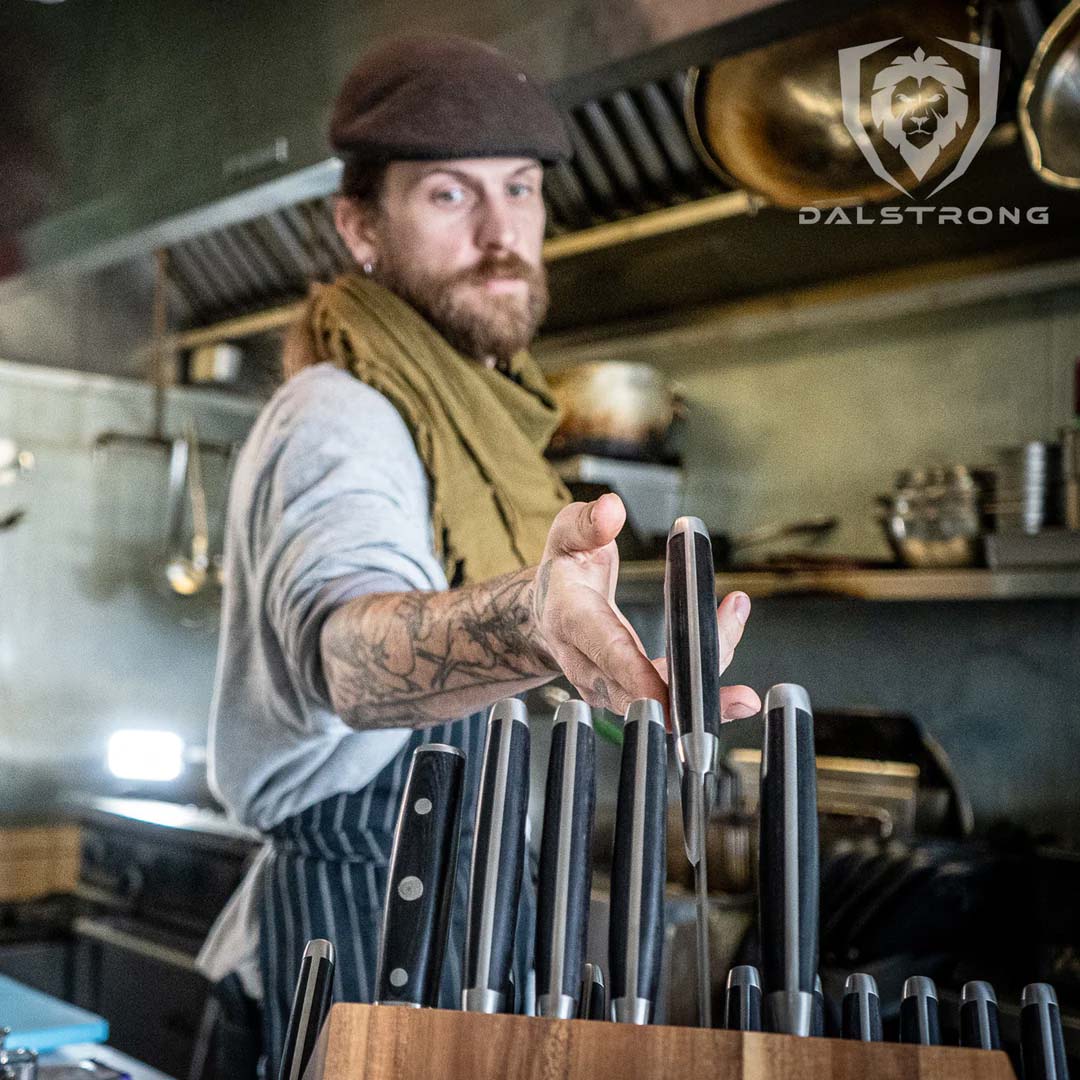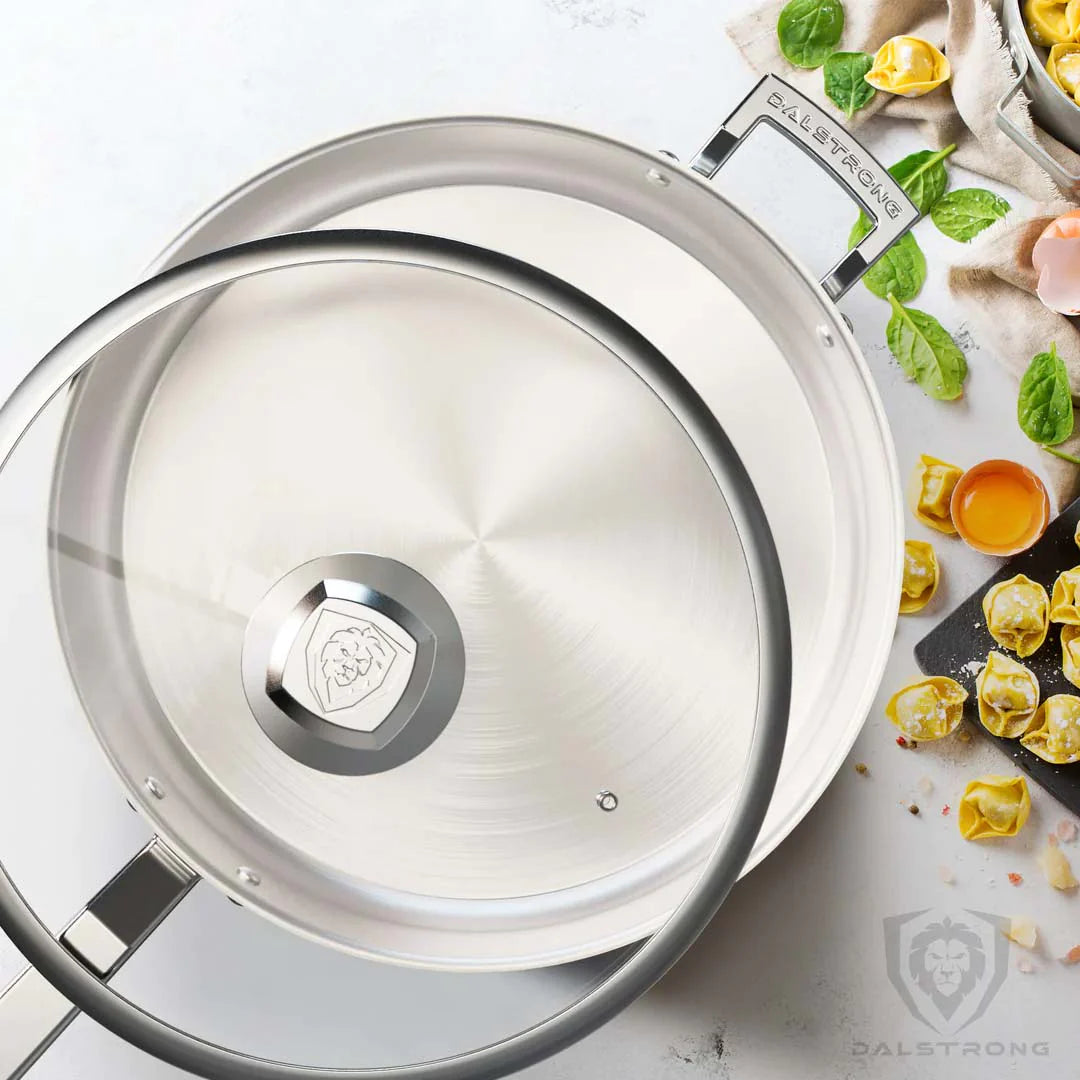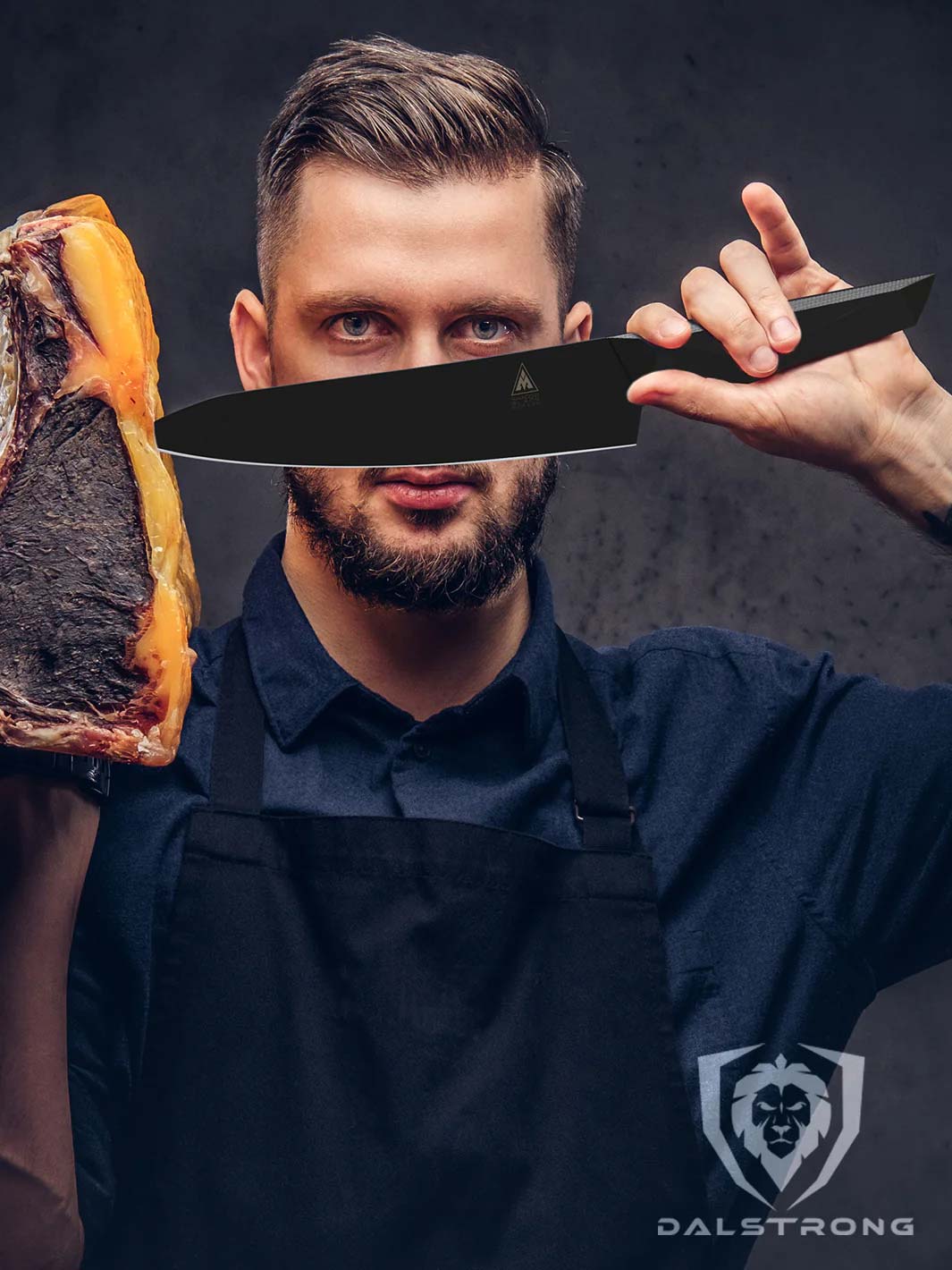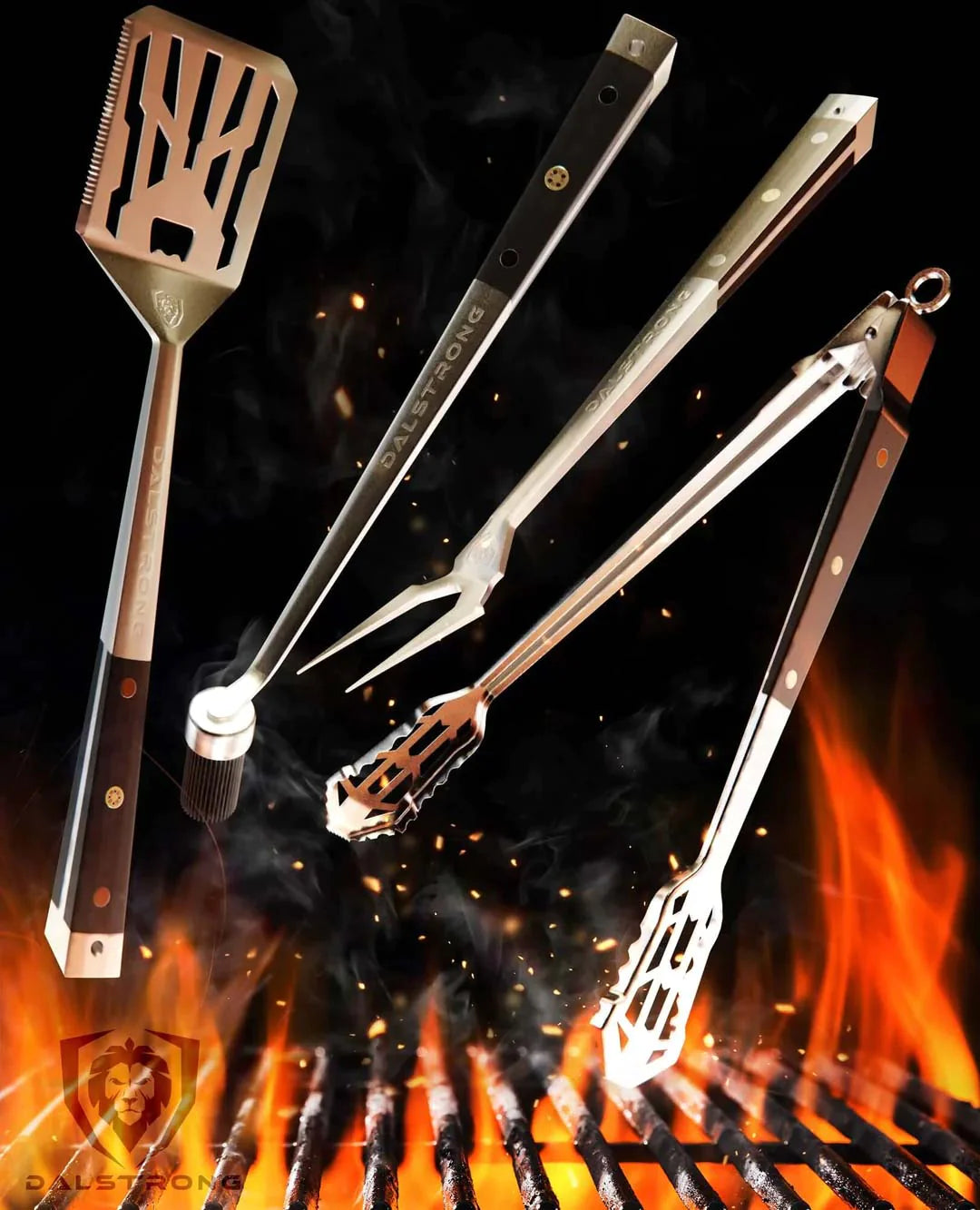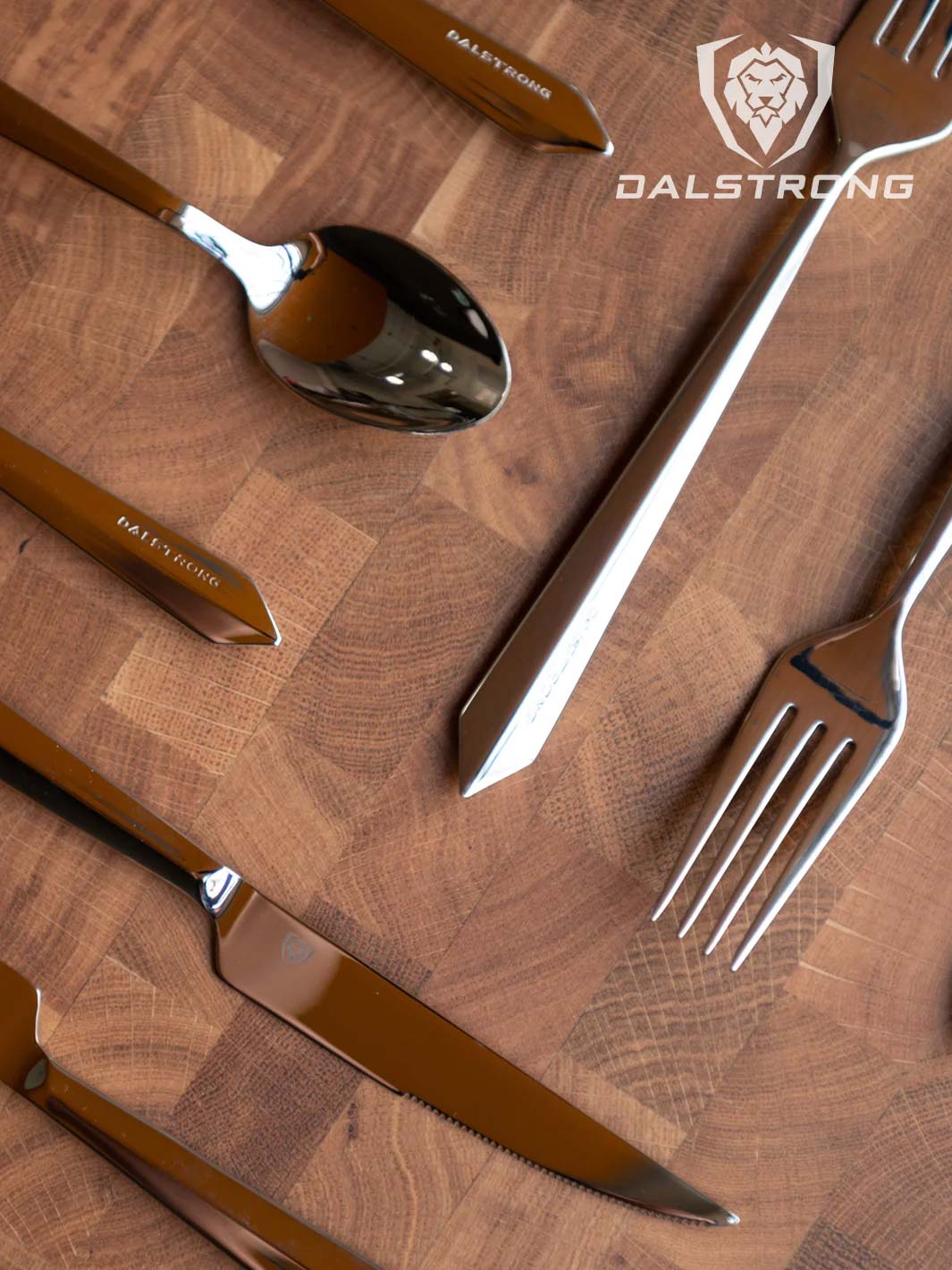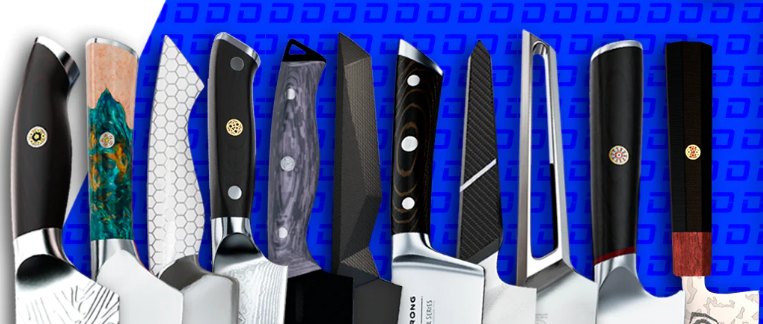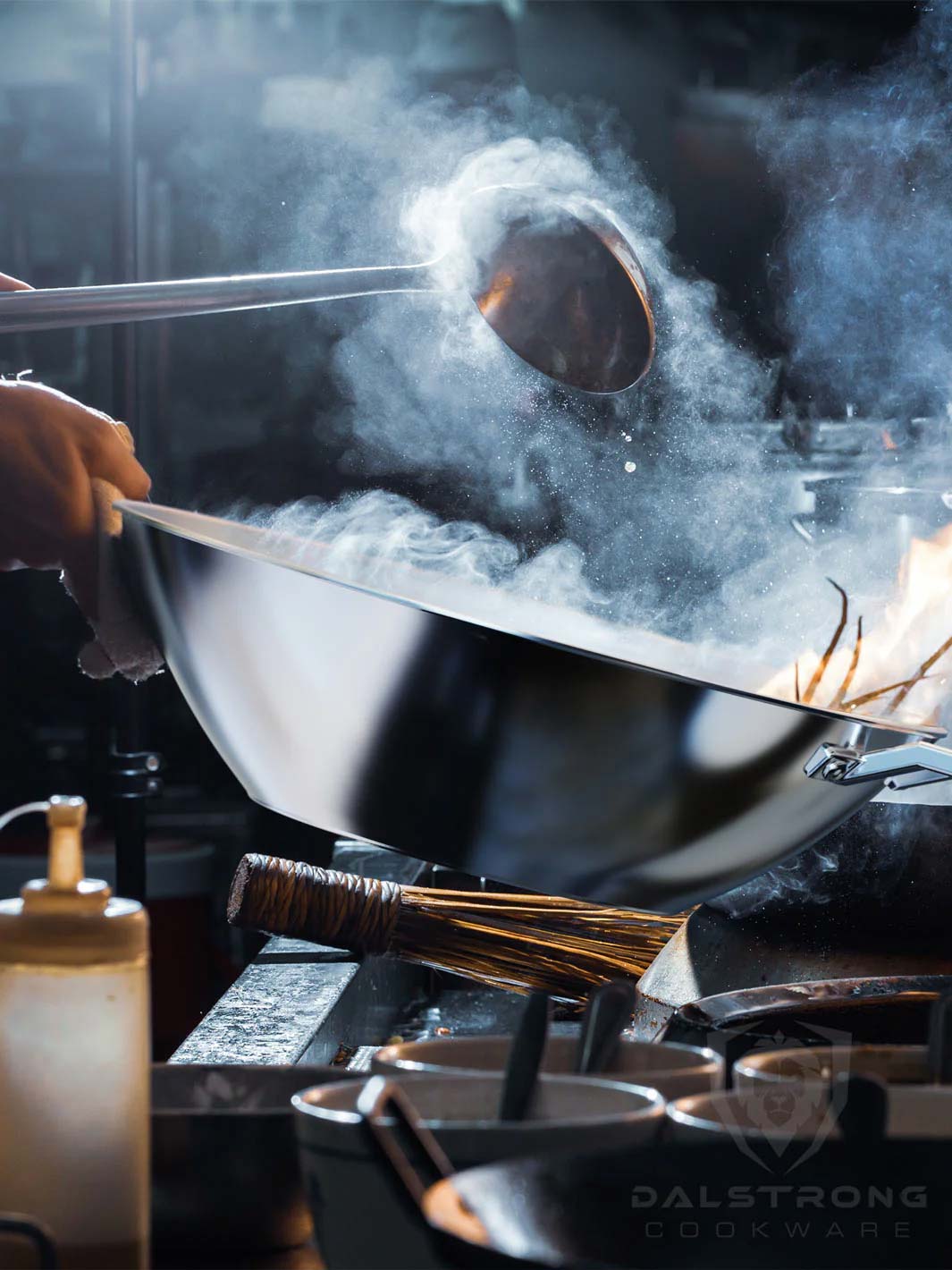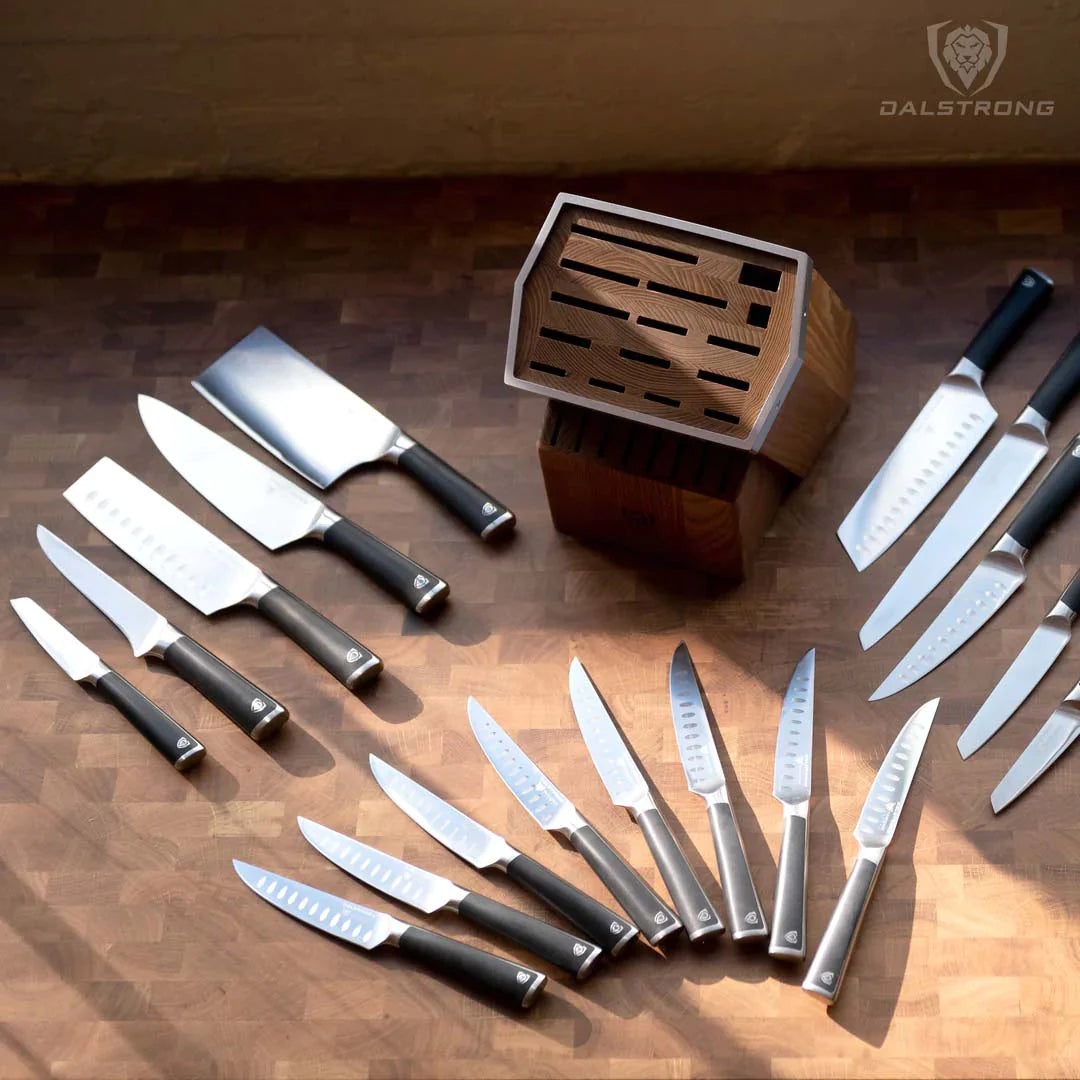All You Need to Know About the Japanese Cooking Knife
 Nakiri Knife 7" | Valhalla Series
Nakiri Knife 7" | Valhalla Series
Not just a tool but a tradition, Japanese cooking knives are the culinary samurai of your kitchen, featuring incredible precision and craftsmanship.
1. What Is A Japanese Cooking Knife?
 Yanagiba & Sushi Knife 10.5" | Single Bevel | Ronin Series
Yanagiba & Sushi Knife 10.5" | Single Bevel | Ronin Series
The mighty Japanese cooking knife - not just a tool, but a testament to centuries of tradition melded with the forefront of metallurgical innovation. Imagine holding a piece of history in your hand, ready to tackle the modern culinary challenge. The Japanese kitchen boasts an arsenal of these culinary samurais, each designed with a purpose that goes beyond mere slicing and dicing.
But it doesn't stop there. Each knife, from the nimble petty knife perfect for intricate tasks like peeling fruit or mincing garlic, to the hefty, double-edged santoku, designed for multipurpose kitchen dominance, tells a story. A story of blade steel that's been painstakingly folded and hammered, creating patterns as unique as fingerprints, such as those found in hammered Damascus knives. Or consider the finesse of a yanagi sushi knife, its slender blade slicing through fish with the precision of a sushi chef's whisper.
These knives aren't forged; they're crafted, with each aspect from the carbon stainless steel to the wood handle, designed to offer not only functionality but also an aesthetic pleasure. The hollow edge chef's knife, for example, isn't just a pretty face. Its unique design reduces drag, allowing for smoother, more efficient cuts - because no one likes to wrestle with a slice of tomato.
In the hands of a skilled chef, these knives become extensions of their will, capable of creating dishes that are as much a feast for the eyes as they are for the palate. Whether you're a professional sushi chef, a culinary enthusiast, or a home cook looking to elevate your kitchen game, the Japanese cooking knife is your companion in the quest for culinary excellence. So, next time you reach for your knife, remember - you're not just cooking; you're wielding centuries of tradition and innovation, all in the pursuit of that perfect cut.
2. Different Types Of Japanese Cooking Knives
 Chef Knife 8" | Double Bevel | Black Acacia Wood Sheath | Ronin Series
Chef Knife 8" | Double Bevel | Black Acacia Wood Sheath | Ronin Series
Each type of Japanese knife is a master of its domain, designed to elevate your cooking from routine to remarkable. This isn't just about cutting food; it's about crafting experiences, with each knife playing a pivotal role in the creation of culinary delights.
Gyuto (Chef Knife)
The steel gyuto stands as the undisputed champion of the kitchen. With a blade that typically ranges from 180mm to 210mm, this knife does it all, embodying versatility. Whether you're dicing onions, slicing brisket, or filleting a delicate piece of fish, the gyuto does so with grace and precision. Its slightly curved edge allows for a rocking motion, making quick work of herbs and vegetables, while the robust construction tackles tougher tasks without hesitation.
Santoku (Multipurpose Knife)
The santoku knife, often seen as the gyuto's slightly shorter cousin, features a flatter edge and a more compact design, usually around 165mm to 180mm in length. Its name, translating to "three virtues," hints at its proficiency with meats, vegetables, and fish. The santoku is especially beloved by those with smaller hands or who prefer a lighter blade. Its versatility is further enhanced by variations such as the double-edged design, making it a favorite for precision cuts and mincing.
Petty (Utility Knife)
The petty knife, with its blade typically around 150mm, is the quintessential partner for detailed tasks that the larger knives might find cumbersome. It excels at peeling, trimming, and other precision work. Think of it as the paintbrush for the fine details in your culinary canvas, perfect for those intricate garnishes or delicate preparations where control is paramount.
Sashimi Knives
Within the realm of sashimi knives, the yanagi sushi knife reigns supreme for its ability to create thin, precise slices of fish, essential for sushi and sashimi. The yanagi's long, slender blade is designed to pull cut through the fish, minimizing the tearing and crushing that can affect the texture and appearance of the delicate seafood. It's a testament to the knife's design that each slice is as much about preserving the integrity of the fish as it is about aesthetics.
Nakiri (Vegetable Knife)
The nakiri boasts a straight blade that makes it ideal for chopping vegetables. Its design allows for an easy, up-and-down motion, and the absence of a pointed tip means it's less likely to cause accidental piercing. The nakiri is a dream for those who find joy in preparing salads, stir-fries, or any dish where vegetables are the star. Its efficiency and ease of use make it a staple in the Japanese kitchen, turning even the most arduous of chopping tasks into a pleasure.
Each of these knives, from the all-encompassing gyuto to the specialized yanagi, represents a facet of Japanese culinary philosophy: that the right tool not only makes the task easier but elevates the food to its highest potential. Whether you're a seasoned chef or a culinary novice, understanding and utilizing these knives can transform your cooking into an art form, where each cut, slice, and chop is a stroke on the canvas of cuisine.
Read about how to care for your kitchen knives. here.
3. What Makes Japanese Cooking Knives Essential In the Kitchen
 Nakiri Vegetable Knife 6" | Shogun Series ELITE
Nakiri Vegetable Knife 6" | Shogun Series ELITE
In the heart of the kitchen, where flavors come alive and culinary dreams take shape, Japanese cooking knives stand as the unsung heroes. The essence of these knives lies not just in their ability to cut, but in their capacity to inspire and transform the cooking experience. With blades ranging from the robust carbon steel gyuto to the intricately patterned hammered Damascus, these knives are a testament to the art of cooking itself.
The carbon steel gyuto knife, revered for its resilience and edge retention, exemplifies the blend of tradition and precision engineering. Its sharpness is not by accident but by design, allowing chefs to execute precise cuts with minimal effort. This sharpness, coupled with the knife's balance, makes tasks like slicing through a thick cut of meat or julienning vegetables not just effortless, but a pleasure. The gyuto's agility in the kitchen is unmatched, moving from task to task with the ease of a seasoned chef.
The santoku knife, often hailed for its ability to handle a wide range of tasks, is another example of how versatile these knives are. Its design, featuring a broader blade and a more pronounced curve towards the tip, makes it ideal for those who favor the rocking motion when chopping. The santoku is adept at making quick work of dicing vegetables, mincing herbs, and slicing fish, its precision elevating everyday cooking to gourmet levels.
For more specialized tasks, the fillet knife comes into play, especially when dealing with fish and meats. Its flexibility allows for precise maneuvering around bones and under skin, ensuring minimal waste and maximum flavor. The fillet knife embodies the Japanese philosophy of respect for ingredients, allowing the chef to honor the food's natural textures and flavors through meticulous preparation.
What sets Japanese knives apart is not just their functionality but their impact on the cooking process. They transform cooking from a mere task into an art form, where every slice, dice, and chop is an opportunity to create something beautiful. The precision of a Japanese chef knife doesn't just cut ingredients; it shapes experiences, turning the kitchen into a stage for culinary expression.
4. Qualities To Look For When Buying Japanese Kitchen Knives
 Kiritsuke Chef's Knife 8.5" | Shogun Series ELITE
Kiritsuke Chef's Knife 8.5" | Shogun Series ELITE
So what do we look for when buying a Japanese kitchen knife? Here’s a guide to finding the treasures among Japanese knives.
Material
The soul of any knife lies in its blade. Opting for high-quality carbon steels or a stainless steel gyuto can be the difference between a knife that stays by your side for decades and one that fades after a few sessions. Carbon steel is renowned for its ability to maintain a razor-sharp edge, offering precision that can elevate your cooking. Meanwhile, stainless steel variants provide a rust-resistant alternative without compromising on sharpness. Both materials ensure longevity, keenness, and a blade that whispers through ingredients rather than tearing through them.
Craftsmanship
The hands that forge a knife imbue it with a spirit of its own. Esteemed brands like Sakai Takayuki, Yoshihiro Kasumi, and Takeshi Saji stand as titans in the knife-making world, their names a byword for quality and reliability. These craftsmen combine traditional techniques passed down through generations with modern innovations, creating knives that are not only functional but also beautiful. A Sakai Takayuki knife, for instance, isn't just a cutting tool; it's a piece of cultural heritage, shaped by the meticulous care of its maker.
Design
The architecture of a knife—the curve of its blade, the balance between handle and edge, the choice between a hollow edge chef's knife or a double-edged santoku—plays a pivotal role in how it performs in your hands. A hollow edge, with its scalloped sides, is a marvel for tasks that involve slicing sticky or delicate items, reducing drag and sticking. On the other hand, the versatility of a double-edged santoku can make it a go-to for everything from vegetables to meats, embodying the essence of multipurpose design. The right design not only complements your cooking style but also turns preparation into a pleasure.
Ergonomics
Last but certainly not least, the feel of a knife in your hand can make all the difference. Ergonomics go beyond mere comfort, affecting control, safety, and fatigue levels during long cooking sessions. Knives with traditional wood handles offer a classic grip that ages beautifully, while modern designs might prioritize balance and weight distribution for a seamless extension of your hand. The tactile connection between chef and tool is sacred, and finding a knife that feels right is paramount to creating dishes with love and precision.
Embarking on the quest for the perfect Japanese kitchen knife is a journey of discovery, where each choice reflects not just your needs in the kitchen but also your personal culinary ethos. Whether you’re drawn to the traditional elegance of a carbon steel gyuto or the modern sophistication of a stainless steel santoku, the perfect knife is out there, waiting to become a part of your cooking narrative. Remember, the best knife is not just about what it can do for your food, but what it can do for your passion for cooking.
5. Must-Have Dalstrong Japanese Knives
1. Kiritsuke Chef's Knife 8.5" Shogun Series ELITE Dalstrong
Thanks to its double-bevel edge, this awesome knife is friendly for all skill levels, not just the sushi masters. The knife sports a jaw-dropping 'Tsunami Rose' pattern, a testament to the craftsmanship that goes into every piece. At its heart is a core of super steel that promises to keep its edge through countless meals. And let's not forget the handle – made of G-10 Garolite, it’s all about giving you a grip that’s both comfortable and secure, making chopping a breeze.
PROS:
- Layered with high-carbon stainless steel for toughness, and a core of super steel for an edge that doesn't quit.
- The double-bevel makes it more user-friendly than traditional single-bevel Japanese knives.
- The handle feels like it was made just for your hand, offering comfort and control even when you’re chopping up a storm.
- It comes with its own fancy sheath, so you can stash it away safely and keep it sharp for ages.
CONS:
- Might be a bit pricier than your average knife, but it’s a case of getting what you pay for.
- Could be a bit much for kitchen newbies, with all its high-end features and care requirements.
2. Santoku Knife 7" Valhalla Series Dalstrong
Crafted from high-carbon steel and honed to a wickedly sharp edge, it’s a testament to both strength and precision. The handle is a work of art, combining celestial resin with stabilized wood for a grip that feels both powerful and elegant in your hand. This knife isn’t just a tool; it’s a companion for every culinary conquest, protected by a Valhalla-embossed leather sheath that’s as stylish as it is functional.
PROS:
- Triple-threat capability means you can slice, dice, and mince with ease, making it a go-to for almost any kitchen task.
- Razor-sharp edge and high-carbon steel construction ensure durability and a clean cut, even after extensive use.
- The celestial resin handle is not just comfortable; it’s practically a piece of art, making this knife a joy to use and to behold.
- Comes with a stylish leather sheath, so you can store your blade safely and in warrior-worthy fashion.
CONS:
- Its unique handle design and aesthetics might not be for everyone, especially if you prefer a more traditional look.
3. Nakiri Vegetable Knife 6" Shogun Series ELITE Dalstrong
The nakiri is specially designed for those who have a passion for prepping greens, fruits, and vegetables, turning tedious tasks into effortless joy. Its straight edge and push-cut specialization make it a dream for creating precise cuts, and the wide blade is perfect for scooping and transferring your freshly cut ingredients. The stunning tsuchime finish isn't just for show; it also minimizes drag and prevents food from sticking. With its super-steel core, this knife promises enduring sharpness and durability, making it a standout in both performance and design.
PROS:
- Specialized for vegetable prep, making it a must-have for chefs and home cooks who love working with fresh produce.
- The scalpel-like sharpness and high-carbon steel ensure precision cutting and long-lasting performance.
- A beautiful, hand-polished handle offers superior control and comfort, turning prep work into an enjoyable task.
- Comes with a protective sheath, so your nakiri is always ready and safe when not in use.
CONS:
- The unique tsuchime finish and intricate design might not appeal to those who prefer more traditional or simpler knives.
4. Santoku Knife 7" Shadow Black Series NSF Certified Dalstrong
This sleek, black blade is more than just a cutting tool; it's a testament to precision and durability. Designed for those who take their cooking seriously, it offers unmatched control and versatility. Whether you're prepping a feast or making a simple salad, this knife handles it all with ease, from coring tomatoes to chopping carrots. Its high carbon steel construction and ergonomic handle mean this knife isn’t just about looks—it’s about making your time in the kitchen more efficient and enjoyable.
PROS:
- Ultra sharp and wear-resistant, making it a kitchen workhorse for all your chopping, slicing, and mincing needs.
- The black titanium-nitride coating not only looks cool but also adds corrosion resistance and enhances the blade's non-stick properties.
- Tall blade height provides ample knuckle clearance, ensuring comfort and safety during food prep.
- NSF Certification guarantees that this knife meets strict standards for public health protection, making it a trustworthy addition to your kitchen.
CONS:
- Its specialized design and materials might require a bit more care and maintenance than your average kitchen knife to keep it in top condition.
6. Frequently Asked Questions
What is a Japanese cooking knife called?
Japanese cooking knives, revered for their precision and craftsmanship, come in various styles and names. The gyuto chef knife, akin to the Western-style chef's knife, is a versatile choice for meat, fish, and vegetables. The santoku multipurpose knife is designed for efficiency in slicing, dicing, and mincing. Specialty knives like the yanagi sushi knife and the nakiri vegetable knife cater to specific tasks, ensuring that every cut is made with precision.
Why do chefs prefer Japanese knives?
Chefs and home cooks alike prefer Japanese knives for their unparalleled sharpness, balance, and durability. The carbon steel gyuto and stainless steel gyuto are particularly prized for their edge retention and ease of sharpening. The unique qualities of knives, such as the hammered Damascus blade steel and the meticulous design of the hollow edge chef's knife, offer precision cutting that enhances the culinary experience.
Why are Japanese chef knives so expensive?
The cost of Japanese chef knives reflects the high-quality materials, such as carbon stainless steel and white steel, and the artisanal craftsmanship involved in their creation. Renowned brands like Sakai Takayuki and Yoshimi Kato use traditional Japanese techniques, including forging and hammering, to produce knives that are not only tools but works of art. The intricate processes, like creating a Damascus gyuto or a santoku knife with a wood handle, demand skill and time, contributing to their higher price.
How do I choose the right knife for my kitchen?
Choosing the right knife depends on your culinary needs and preferences. For versatile kitchen tasks, a gyuto 210mm or a santoku knife offers great flexibility. If you're into baking or sandwich-making, a bread knife with a serrated edge is indispensable. For those who enjoy sushi and sashimi, a specialized sashimi knife like the yanagi is essential.
What should I know about caring for my Japanese knives?
Caring for Japanese knives involves proper cleaning, sharpening, and storage. Use sharpening stones to maintain the blade's edge and knife sharpeners for regular upkeep. Store your knives in knife bags or with a saya cover to protect the blade.
Can left-handed users find suitable Japanese knives?
Yes, left-handed cooks can find a wide range of Japanese knives catered to their needs. Many brands offer lefthanded knives with ambidextrous or left-hand-specific designs, ensuring comfort and precision. Whether you're looking for a utility knife, a paring knife, or a specialized filleting knife, there are options available. Additionally, knife handles are designed to accommodate different grips, making it easier for left-handed users to find a knife that feels natural in their hand.










































































































































































































